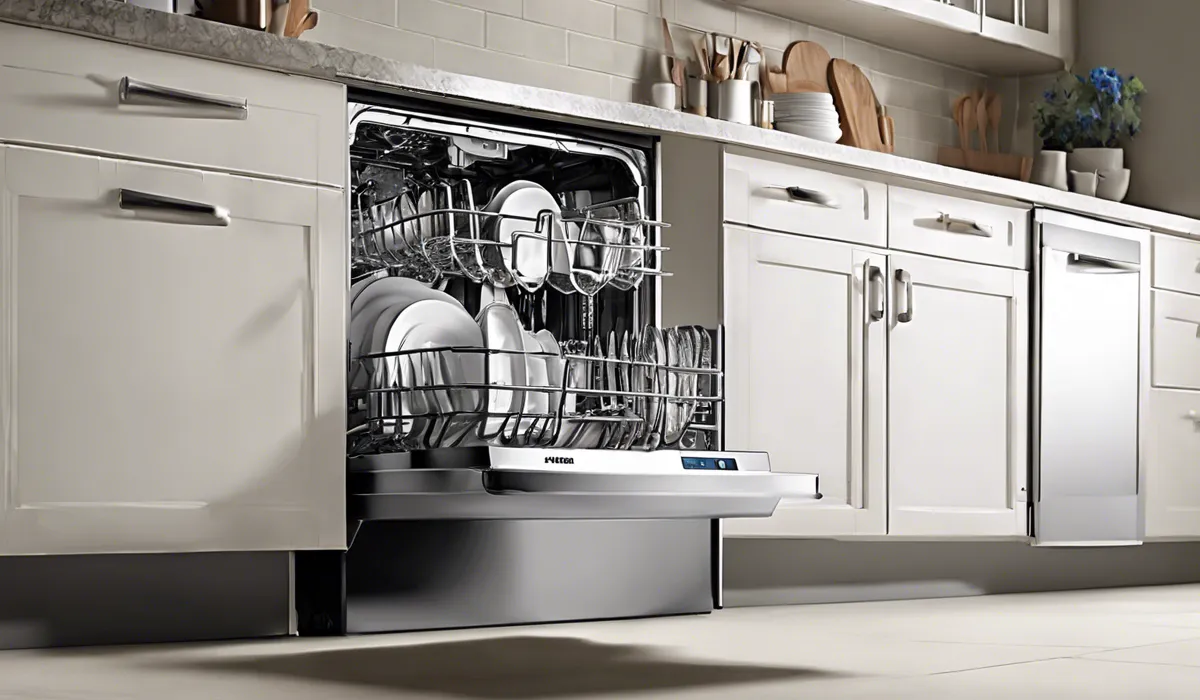How to Lower Dishwasher Legs: A Quick & Easy Guide
To lower dishwasher legs, turn them counterclockwise. Use pliers or a wrench if they’re stiff. Adjust each leg to ensure the appliance is level. Check stability before sliding the dishwasher back into place.
Tools and Materials Needed

Gathering Your Toolkit
Before you start the process of lowering your dishwasher legs, it is important to gather the necessary tools.
An adjustable wrench or pliers will aid in turning the legs, while a screwdriver can be useful for adjusting legs that are designed with a screw mechanism.
A flashlight or headlamp is essential for illuminating the dark space beneath the dishwasher, ensuring you can see what you’re doing.
To measure the height and check the balance of the dishwasher, a measuring tape or ruler, along with a level, will be necessary.
Finally, for the protection of your flooring, consider using a piece of cardboard or protective mat when working on the appliance.
Why Each Tool Is Important
The tools mentioned are not just important but essential for a successful adjustment of your dishwasher legs. The wrench or pliers provide the grip and leverage needed to turn legs that may be stiff or difficult to move by hand.
The screwdriver is a must-have for legs that require a screw-based adjustment.
Adequate lighting is a non-negotiable aspect of any appliance repair task, and a measuring tape, ruler, and level ensure that you achieve a perfectly balanced dishwasher, which is crucial for its operation.
The piece of cardboard or mat protects your floor from scratches and damage during the process.
Step-by-Step Guide to Lowering Dishwasher Legs

Preparation Steps
Before you begin the adjustment, make sure to empty the dishwasher to prevent any items from being damaged and to lighten the appliance. Next, turn off the power and water supply to the dishwasher to ensure your safety during the adjustment process.
This is a crucial safety step that should never be overlooked. Once the power and water are off, remove the kick plate or toe panel to access the legs of the dishwasher.
This panel is typically located at the bottom front of the dishwasher and can be removed by unscrewing or snapping off, depending on the model.
Adjusting the Dishwasher Legs
With the kick plate removed, locate the dishwasher legs. They are usually threaded pegs that can be turned to adjust the height.
For the front legs, turn them clockwise to lower the dishwasher. It’s important to keep the dishwasher balanced, adjusting each leg a little at a time to maintain stability.
For rear legs, if they are present and adjustable, you may need to use a screwdriver or adjust them by hand, which might require you to pull out the dishwasher slightly. Always ensure you do this gently to avoid damaging the connections at the back.
Finalizing the Adjustment
Once you’ve adjusted the legs, check the level of the dishwasher with your level tool to ensure it’s sitting flat. If it’s not level, test and readjust as necessary.
After achieving a level position, replace the kick plate or toe panel and turn on the power and water supply.
Finally, run a test cycle to ensure proper operation of your dishwasher. This will help you confirm that the dishwasher is stable and functioning as it should be after your adjustments.
Tips for a Smooth and Safe Adjustment Process

Implementing Safety Precautions
Before starting any work on your dishwasher, always remember to disconnect the power and water supply.
This is a critical safety measure that prevents accidental electrocution or water damage. Whether you are working on the dishwasher toilet flange or simply adjusting the legs, safety comes first.
Floor Protection During Adjustment
Protecting your floor is just as important as the adjustment itself. Place a cardboard or protective mat under the dishwasher to prevent any potential scratches or damage during the process.
This is especially important if you have hardwood or linoleum flooring that can easily be marred by the metal legs or tools.
Ensuring Even Weight Distribution
As you adjust the legs, maintaining an even weight distribution is key to the proper functioning of your dishwasher. An uneven dishwasher can lead to poor performance, leakage, or even damage to your dishes.
Use your level frequently during the adjustment to ensure that the appliance remains balanced throughout the process.
Seeking Professional Help
If you encounter any issues or if the task seems too daunting, don’t hesitate to ask for professional help.
A qualified technician can ensure that your dishwasher is adjusted correctly and safely. Remember, it’s better to get help than to risk damaging your appliance or your home.
Post-Adjustment Maintenance Checks
After you’ve completed the leg adjustments, perform some maintenance checks to ensure everything is in order.
Check for any leaks during the first few wash cycles, listen for unusual noises, and make sure the door seals properly.
Regular maintenance, including checking the dishwasher’s level and stability, can prolong its life and ensure it operates efficiently.
FAQs About Lowering Dishwasher Legs
How do I adjust the height of my dishwasher legs to lower the machine?
To lower the dishwasher legs, turn each leg counterclockwise, either by hand or with pliers or a wrench if they’re stiff.
What tools do I need to lower the legs on my dishwasher?
You may need pliers or a wrench if the dishwasher legs are stiff and cannot be turned by hand.
How can I make sure my dishwasher is level after adjusting the legs?
After adjusting each leg, use a level to check the appliance from side to side and front to back, making further adjustments as necessary until it is level.
What should I do if my dishwasher legs are stuck and won’t turn?
If the legs are stuck, apply a lubricant like WD-40 and wait a few minutes before trying again with pliers or a wrench for better grip.
Is it important to check the stability of the dishwasher after lowering the legs?
Yes, it is essential to check the stability of the dishwasher by gently rocking it to ensure it doesn’t wobble before sliding it back into place.
Final Thoughts
To lower the legs of a dishwasher, rotate them counterclockwise. If the legs are difficult to turn, employ pliers or a wrench for better leverage.
Make sure to adjust each leg individually to level the appliance properly. Always verify the dishwasher’s stability before repositioning it into its designated space.





